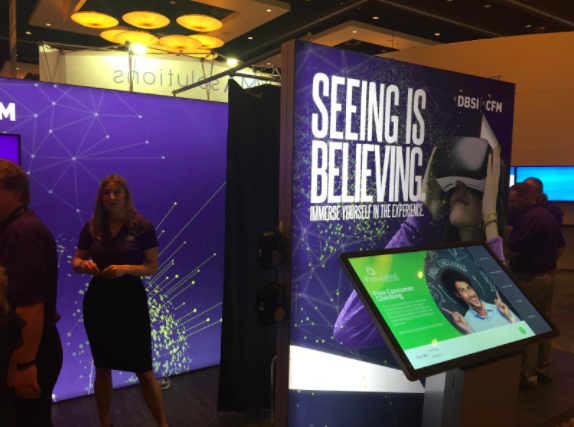I was in San Diego, one the most beautiful cities to visit in the U.S. with incredible weather, and because I was the closing keynote speaker at the annual Symitar Educational Conference and TechConnect, I had most of the day free. This gave me an opportunity to cruise the exhibit area where dozens of vendors were set up to show off all of their latest and greatest technologies to 1,300 executives from credit unions all across the U.S. I had the pleasure of seeing some old friends from the industry, though also participated in some truly bad demos (Seriously, most vendors simply cannot handle someone asking them to demonstrate that their system does what they purport it to do).

As I was cruising the hall, however, I came upon the DBSI booth. DBSI is a company based in Chandler, AZ, focused on Branch Transformation—a subject which I have spent many hours studying and teaching. So I was already predisposed to be interested in whatever they were pitching, but, to my great delight, they also had two VR stations set up! Way cool! Now, these were not the full-on, walk-around-in-a-15-square-foot-space systems, but they did have two complete setups with Oculus Rift headsets and audio. Once you put on the headset and headphones, you were transported into a 360-degree view of a traditional branch and then were able to participate in the transformation of that branch.

Like all VR experiences, you could look completely around and see everything in front, behind, left and right. It was a perfect way for someone who wanted to see the full impact of Branch Transformation to be able to envision how the transformed branch would look. More importantly, you can “see” the transformed branch “in action,” with people walking around and interacting. There is no plan, no drawing or 3D CAD display that can come close to the “reality” of what you can do with virtual reality.
I had a chance to chat with Emily Sweillam, Director of Marketing for DBSI. She said the VR demo at the show had been a big hit. They had also been able to record the video and audio they needed fairly inexpensively, using an app made for that purpose. They were the only vendor in the hall using VR to show off the capabilities of their solution. Certainly that in and of itself was a differentiator. But I strongly believe there is a huge opportunity for VR to become both a part of the gamification of banking and a reason for people to make the branch a destination. In fact, in my keynote just a few hours later, I showed an animation I had created to demonstrate how someone would use VR in a banking application.
Is virtual reality just a toy, valuable only as a high-end way to enhance first-person shooter games? Or is there a place for it in your business? Even creating an animation of how VR could enrich the customer or member experience could be a game changer in your sales efforts. As you bring on younger employees, they will be more comfortable using these tools and explaining them to others. Moreover, as I have documented in past posts, the cost of setting up a VR cube is less than $7,000. Many organizations are spending much more on technology that has little-to-no promise of bringing in even one net new prospect.
How could you use VR to enhance your ability to create a vision of transformation for your customers?
